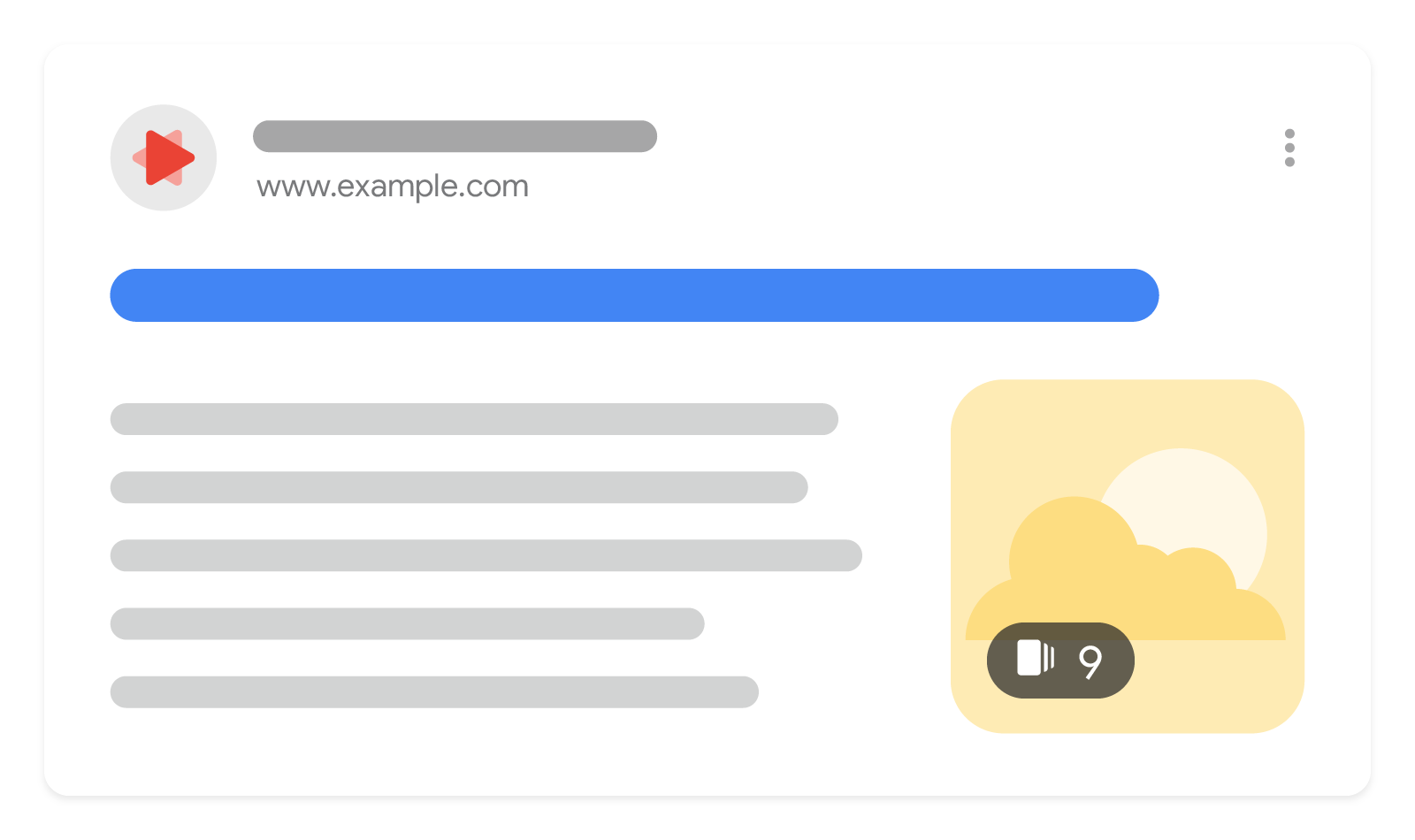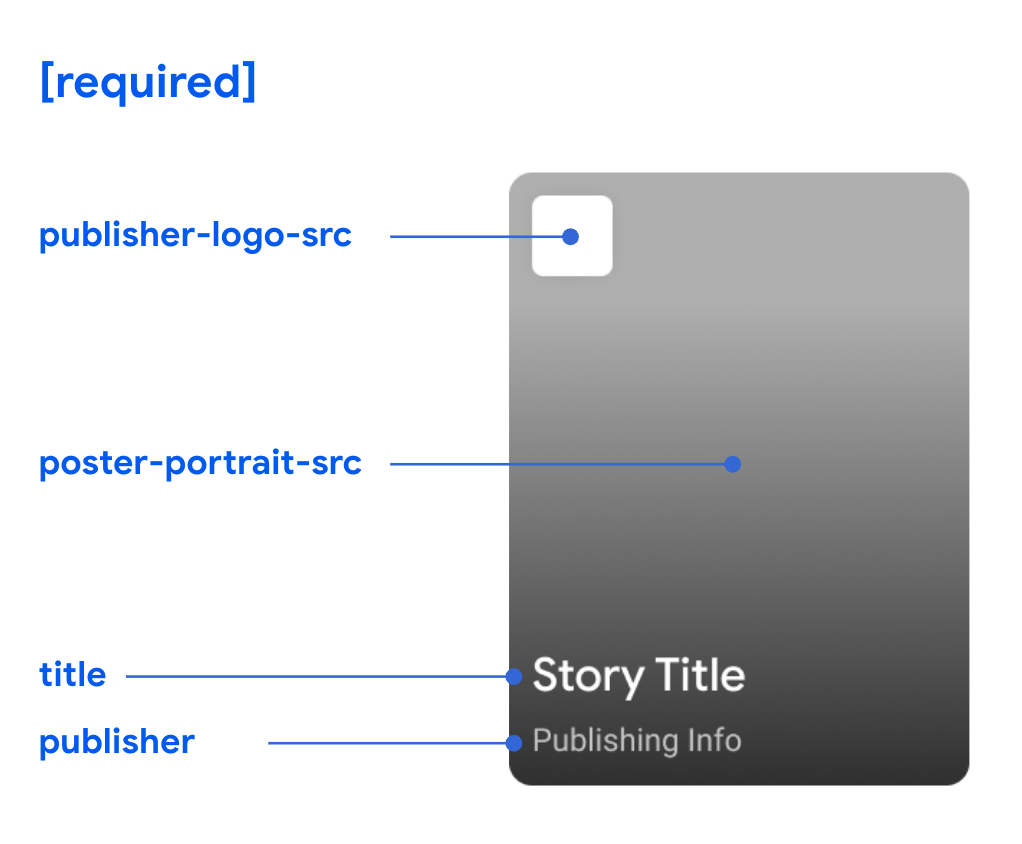讓網路故事顯示在 Google 上

網路故事是廣受歡迎「故事」格式的網路式版本,融合了影片、音訊、圖片、動畫和文字,打造出動態瀏覽體驗。這種格式以視覺為主,可讓使用者透過輕觸或滑動,依自己的節奏逐步探索內容。
本指南說明如何讓您的網路故事顯示在 Google 搜尋 (包括探索) 中。
以下簡要說明如何在 Google 上顯示網路故事:
- 建立網路故事。
- 確認網路故事是有效的 AMP。
- 驗證中繼資料。
- 檢查網路故事是否已編入索引。
- 遵循《網路故事內容政策》。
功能適用情況
網路故事可以在 Google 搜尋中以單一搜尋結果的形式呈現,只要是 Google 搜尋支援的地區和語言,即可查看網路故事。
在「探索」動態消息中,網路故事會以單一資訊卡的形式顯示,只要輕觸一下即可查看。雖然這種顯示方式適用於所有可使用 Google 探索的區域和語言,但也最常出現在美國、印度和巴西。
建立網路故事
網路故事其實就是數個統整在一起的網頁,必須遵循的規範和最佳做法與發布一般網頁時相同。建立網路故事的方法有兩種:
- 擇一使用多種故事編輯器工具,不必撰寫任何程式碼也能建立故事。
- 或者,如果您有工程資源,可以透過 AMP 建立網路故事。為確保網路故事能夠正常顯示,建議使用 Chrome 開發人員工具模擬各種裝置的大小和格式。
請參閱這篇文章,瞭解建立網路故事的最佳做法,確保建立過程順暢。
確認網路故事是有效的 AMP
製作完成後,請確認網路故事為有效的 AMP。所謂有效的 AMP 故事,就是符合各項 AMP 規格的故事。這樣系統才能透過 AMP 快取提供故事,並確保網路故事發揮完整效能,提供使用者最佳使用體驗。下列工具可用來確保網路故事為有效的 AMP:
- 網路故事 Google 測試工具:檢查網路故事是否有效。
- 網址檢查工具:檢查網路故事是否為有效的 AMP,並檢查網址的 Google 索引狀態。
- AMP Linter:在開發期間透過指令列驗證網路故事。
驗證中繼資料
如要讓網路故事能夠顯示在 Google 搜尋或 Google 探索服務中,請提供必要中繼資料,讓系統在預覽中顯示網路故事。
- 請參閱「中繼資料的完整清單」。
- 確認網路故事 Google 測試工具可以正確顯示您的網路故事預覽畫面。
請注意,所有網路故事都必須提供下列欄位資訊:publisher-logo-src、poster-portrait-src、title 和 publisher。

檢查網路故事是否已編入索引
確認 Google 搜尋是否已將您的網路故事編入索引。使用網址檢查工具提交個別網址,或使用網頁索引報表或 Sitemap 報告查看狀態。如果網路故事尚未建立索引:
- 如要讓 Google 更容易找到您的網路故事,請從您的網站連結至網路故事,或在 Sitemap 中新增網路故事網址。
- 所有網路故事都必須為標準網頁。請確定每則網路故事都使用
link rel="canonical"指向自身。例如:<link rel="canonical" href="https://www.example.com/url/to/webstory.html"> - 確認網路故事網址未受到 robot.txt 或
noindex標記封鎖,導致 Googlebot 無法存取。
